Marijuana / Hemp Timeline

|
Since this
Timeline is so large we have supplied
a quick links menu below: |
||
TIMELINE
|
8000-7000 B.C.
|
The earliest known fabric is woven from Hemp.
|
Year
1564
|
|
Year
1794
|
George Washington says, "make the most of the hempseed... sow it everywhere." Washington grew hemp at his Virginia home and encouraged its growing to bypass reliance of importing from other countries...especially England. For over ten thousand years...hemp was undeniably man's most useful plant. Our ancestors depended upon hemps exceptionally strong fiber, cellulose rich pulp, and highly nutritious seeds. The plant was cultivated and used throughout history for food, clothing, fuel and medicine, as well as ship sails, rope, shelter, and paper. In colonial America, hemp was not only legal but essential to survival.

|
late 1800's
|
Before the Civil war, hemp was the second cash crop next to cotton. But while cotton could be processed by machine, slaves were the only cost effective way to separate the hemp fiber from the pulpy core that was used to make paper. When slavery ended after the war, the hemp industry went into decline. In the late 1800's paper makers such as The Hearst Corporation converted to tree-based pulp. It was easier to chop down a forest than to pay for laborers to process the hemp, however, it takes four acres of trees to produce one acre worth of hemp to make the same amount of paper. And, it takes a generation to produce the trees whereas it only takes one half a year to produce the hemp

Notice that Hemp was considered among those plants with Great Commercial Value!
|
1900's
|
William Randolph Hearst's newspaper empire promulgated marijuana horror stories and other works of pure fiction as staples of sensationalistic newspaper headlines which would put today's National Enquirer and other gag mags to shame.

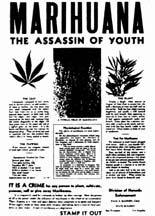
William Randolph Hearst - Grandfather of Patty Hearst
This guy hated minorities, and used his newspaper empire to aggravate racial tensions at evey possible opportunity. He especially hated Mexicans and portrayed them as lazy, degenerate and violent. He also depicted them as "Marihuana smokers" and job stealers. The real fire under his buzongo was that he had lost 800,000 acres of prime timberland to Pancho Villa.
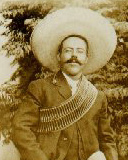
Panch Villa
|
Year 1919
|
|
Since this
Timeline is so large we have supplied
a quick links menu below: |
||
The U.S. Department of Agriculture publishes a pamphlet urging Americans to grow cannabis (marijuana) as a profitable undertaking. [David F. Musto, An Historical perspective on legal and medical responses to substance abuse. *Vilanova Law Review* 18-808-817 (May), 1973; pg 816]
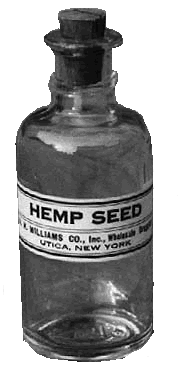
An old Hemp Seed drug pharmacy medicine bottle from
around 1927.
The A H Williams Co. in Utica, NY was closed by the end of that decade.
| To Top |
The Federal Bureau of Narcotics is formed. Many
of its agents, including its first commissioner, Harry J. Anslinger, are former
prohibition agents with nothing better to do with their time than to fabricate
a new way to harass the American public rather than getting a real job.
Anslinger is on the far left in below photo.
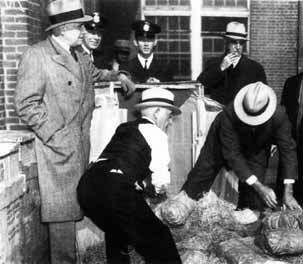
|
Year 1931
|
![]()
|
Coincidence
#1
|
A German immigrant invented a machine called a decorticator in 1916. In February, 1938 Popular Mechanics magazine recognized the potential bonanza for American farmers and entrepreneurs. The article went on to declare that hemp could be processed quickly and cheaply for the first time in its history, much like the Cotton Gin created by Eli Whitney in 1793, which helped the south get back on it's feet. The magazine Mechanical Engineering called hemp "the most profitable and desirable crop that can be grown." |
|
Coincidence
#2
|
In the 1920's, The DuPont Chemical company developed and patented petroleum fuel additives such as tetraethyl lead, as well as the sulfate and sulfite processes for manufacture of pulp from trees, and numerous new "synthetic" products such as nylon, cellophane, and other plastics. At this same time other companies were developing "synthetic" products from renewable biomass resources; namely hemp. The hemp decorticator promised to eleminate much of the need for wood-pulp paper thus threatening to drastically reduce the value of the vast timberlands still owned by Hearst. |
|
Coincidence #3,
#4 & #5
|
U.S. Secretary of the Treasury Millionaire-Financier Andrew Mellon was DuPont's banker, Anslinger's boss and Anslinger's wife's uncle. |
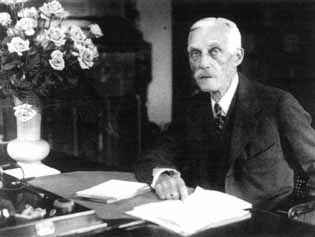
Andrew Mellon - Secretary of the Treasury
|
Year 1936
|
Reefer Madness, the movie, promulgated placing users
in an institution
for the criminally insane for the remainder of their natural lives.
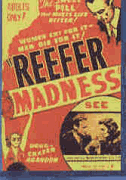
|
Year 1937
|

Lammont DuPont
Wallace H. Carothers patents nylon (for the DuPont
company) When asked what to call their new fiber, they decide on a combination
of "Ny" (short for New York) and "Lon" (short for London) where their headquarters
were located. This new fiber made from petroleum was to be jealously protected
from the all-natural hemp fibers.
|
Year
1937
|
To Top |
The Marijuana Tax Act is enacted, by the unrelenting promotion of Harry J. Anslinger. He was the governments "expert witness" during the congressional hearings on the proposed Marijuana Tax Act. As proof of Marijuana's malevolence, he introduced into evidence the bogus Hearst newspaper headlines that trumpeted the "violence, insanity and death" caused by marijuana. Despite opposition by the American Medical Association, Congress passed the law unanimously after debating the law for a grand total of 90 seconds. In the Spring of 1937 Dr. James Woodward, representing the A.M.A. testifies that the law would be denying the world a potent medicine. President Franklin D. Roosevelt signed it into law on August 3rd, 1937. It did not prohibit marijuana and hemp, only a constitutional amendment can do that. By imposing "prohibitive taxes" and mountains of red tape, it made cultivation, processing, sales and any use of the hemp plant virtually impossible. This law is still in effect today.

Franklin D. Roosevelt
|
Since this
Timeline is so large we have supplied
a quick links menu below: |
||
Popular Mechanics introduces Henry Ford's plastic car, manufactured from and fueled by cannabis. Hoping to free his company from the grasp of the petroleum industry, Ford illegally grew cannabis for years after the federal ban. His composite car body was stronger than steel which would have made "planned obsolesence" obsolete. In other words, because parts on the automobile were going to be so strong there wouldn't be as much of a need for car repair shops to make fortunes from selling new fenders and bumpers at outrageous prices.

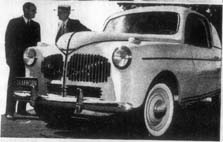
Henry Ford and his car made from Hemp
|
Year 1942
|
The Japanese invasion of the Philippines cuts off the U.S. supply of Manila hemp. The U.S. government immediately distributes 400,000 pounds of cannabis seeds to farmers from Wisconsin to Kentucky. Just four short years after cannabis was outlawed as the "assassin of youth," the government requires farmers to attend showings of the USDA pro-cannabis classic, Hemp for Victory.
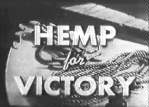
|
Year 1944
|
New York Mayor LaGuardia's Marijuana Commission concludes that there is no link between cannabis and violence, instead citing beneficial effects of marijuana. Harry Anslinger goes berserk, denouncing Mayor LaGuardia and threatening doctors with prison terms should they dare to carry out independent research on cannabis.
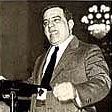
Mayor LaGuardia
|
Year
1948
|
|
Year 1961
|
Anslinger heads the U.S. delegation to the United Nations Drugs Convention, which issued the United Nations Single Convention Treaty on Narcotics. Intended to eradicate marijuana use within 25 years, the Single Convention Treaty removes the issue of legal classification of cannabis from citizens of the United States. Reversal of marijuana's criminalization on a global level now requires agreement among all 108 signatory nations. According to the U.S. Supreme Court's 1920 ruling in Missouri vs. Holland, treaties with foreign nations take precedence over domestic legislation, never-mind that throughout history, treaties with the Native Americans were constantly made null and void to satisfy the whims of a growing nation of European Immigrants. 1962 - President John F. Kennedy forces Federal Bureau narcotics czar Harry Anslinger into retirement after Anslinger attempts to censor the work of Professor Alfred Lindsmith, author of The Addict and the Law. Some time after his assassination in 1963, associates of Kennedy claimed that the president used cannabis for back pain and planned to legalize marijuana during his second term. ARE WE, YET, GETTING ANY IDEA AS TO WHOM MIGHT BE BEHIND PRESIDENT KENNEDY'S ASSASSINATION?

John F. Kennedy
|
Year 1964
|
To Top |
Dr. Raphael Mechoulam of the University of Tel Aviv isolates THC Delta-9, the primary active ingredient in cannabis -- and one of at least 60 compounds found in cannabis that have therapeutic value.
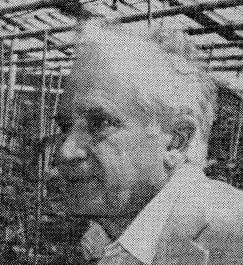
Dr. Raphael Mechoulam
|
Since this
Timeline is so large we have supplied
a quick links menu below: |
||
Keith Richards and Mick Jagger are busted at Richard's home for marijuana possession.
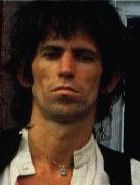

Keith Richards and Mick Jagger of the Rolling Stones
|
Year 1971
|
|
Year 1973
|
|
Year
1974
|
Jack Herer, author of the infamous book "The Emperor Wears No Clothes", realizes a new paradigm. Hemp could save the world. Virtually everything now being made from trees and petroleum could instead be made from hemp. That not another single oxygen producing tree would ever have to be cut down, that "clean-burning" fuel could be made from the bio-mass of the hemp plant. This new fuel would run cars, power plants and even provide heat for our homes. Hemp could be grown and processed into cloth and paper with only a fraction of the TOXIC chemicals used in processing cotton and trees. Jack pictured a world saved from pollution, acid rain, global warming, and deforestation.
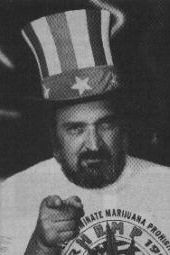
Jack Herer
|
Year
1976
|
The Ford Administration bans independent research by federal health programs on the use of natural cannabis derivatives for medicine. Private pharmaceutical corporation are allowed to do limited "no-high" research using only THC Delta-9, ignoring other potentially beneficial active natural ingredients.

Gerald Ford
|
Year 1979
|
The country's first hemp store opens in Venice California.
Products are imported from other countries.
|
Since this
Timeline is so large we have supplied
a quick links menu below: |
||
Congress amends the 1878 Posse Comitatus Act which specifically forbid the armed forces to enforce civil law, so that the U.S. Military could provide surveillance planes and ships for interdiction purposes inside and outside the borders of the United States.
Jack Herer is arrested for registering voters for California Hemp and Marijuana Initiatives. President Reagan causes his arrest under the guise of violating an arcane wartime sabotage act and Jack goes to federal prison in 1983 after being refused for his appeal to be heard by the U. S. Supreme Court.

Ronald Reagan
|
Year 1984
|
To Top |
President Bush Declares War on "Drugs" and enlists the National Guard to make surveillance runs over American soil from the air. Sophisticated instruments are created able to detect the Hemp plants heat signature from the air even from space. In 1985 - Pentagon spends $40 million in interdiction.
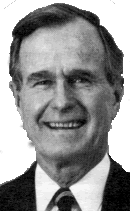
George Bush
|
Year 1989
|
|
Year 1989
|
|
Since this
Timeline is so large we have supplied
a quick links menu below: |
||
As the drug war gets uglier and uglier, 390,000
American citizens are arrested on marijuana-related charges this year alone.
The D.A.R.E. program created by LA Police Chief Darryl Gates promotes a Stalinist
Russia approach to having kids turn on their parents and report them to the
authorities if they find them smoking pot.
Los Angeles Police Chief Darryl Gates testifies before the U.S. Senate Judiciary Committee that "casual drug users should be taken out and shot." Is this the caliber and quality of what we want in our public officials?!?

Darryl Gates
|
Year 1996
|
|
Year 1998
|
Rep. Bob Barr (R-Ga), former federal prosecutor (veteran Drug Warrior), deftly slipped a "rider" provision into that November's federal budget bill for the DC City government, which Congress controls, stating, "None of the funds contained in this Act may be used to enact or carry out any law, rule, or regulation to legalize or otherwise reduce penalties associated with the possession, use, or distribution of any Schedule I substance... or any tetrahydrocannabinois [sic] derivative, thereby effectively censoring the results of the I-59 medical marijuana initiative tally in advance, no matter how it might come out. Barr's rider to DC's Fiscal Year 1999 city budget went into effect exactly 13 days before the November 3rd, 1999 election, and gained only a couple of paragraphs in the Washington POST on Nov. 1.
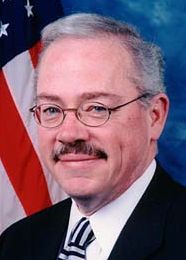
Bob Barr R-GA
So on November 4th it came as quite a surprise when the DC Board of Elections and Ethics announced that no one there had dared push the button to tally the I-59 vote, for fear of facing federal prosecution for spending the $1.50 it might cost. If the voters had turned I-59 down, of course, there would have been no problem. But since voters in five other states had, in that same election, resoundingly approved medical-marijuana referendum proposals, it would have been a risky venture to push that button in DC. When ACT-UP, supported by the MPP and NORML promptly moved to sue the federal government to release the I-59 tally, they were surprised to be joined immediately by not only the ACLU but the DC City Council, and eventually a whole roster of civil-liberties organizations. This made it necessary for the feds to try and defend Rep. Barr's extraordinary "rider" in DC federal court, dragging the case on for ten months, eating up hundreds of thousands of dollars and thereby "breaking the very law" that Rep. Barr imposed with his FY1999 "rider".
Then, later in July of 1999, the House of Representatives Appropriations committee were setting up the DC City budget for the Fiscal Year 2000, they tweaked Rep. Barr's now-notorious rider just enough to provide for the counting of the 1998 vote on I-59, but to specifically ban the city government from ever putting it into effect. This goes far beyond drug-policy issues, and has to do with infringements on the sovereignty of the American electorate in general -- since Congressional infringements of DC voters' rights can eventually be cited as precedence to stifle voters everywhere, and undoubtedly will be. Since six states have already passed identical medical-pot laws, the congresspeople from those states will be opposing their constituents' declared interests if they vote to ditch I-59. And, if Congress does vote to nullify I-59, it will be the first time in American history that the federal government has explicitly suppressed law that was passed by popular vote, anywhere in the country. Congress would effectively be committing treason against the People of the United States.
Finally a federal judge ordered the November 1998
D.C. votes counted in September 1999, almost one year later, and it officially
passed by 69% of the vote. In October 1999, Rep. Barr asked Republican legislators
to again vote to refuse to allow the law to be implemented.
|
Year 1999
|
To Top |
On November 2, 1999, the voters of Maine approved a state-wide initiative by an overwhelming 61% to make medical marijuana legal by Doctor's recommendation. Medical Marijuana is now legal on the entire West Coast, and the East Coast is beginning to follow suit.
October -- Colorado voters learn, after her untimely death, that Secretary of State Vicky Buckley had "made a mistake" by keeping the initiative from being counted. Donetta Davidson, who succeeded Buckley in July, found 66 petitions that hadn't been counted in Buckley's office. Her staff reviewed the signature count and found that more than 2,500 had been improperly disqualified by Buckley's staff. She said the initiative had 253 more signatures than the 54,242 needed to make the November 1998 election ballot.
California, Washington, Oregon, Alaska, Maine, the District of Columbia,
and Arizona voters have voiced their interests to their elected officials
that they want hemp/marijuana to be decriminalized. How about your state?
|
Year 2000
|
Colorado and Nevada now have joined the previous states in granting physicians the ability to prescribe "Medicinal Marijuana" to those whose suffering of pain can only be aliviated through this marvelous drug. Although there is no legal way to get them the drug, they have this voter approved initiative of the People backing them up.
© Images and text are copyright protected.
ALL rights reserved and may be reproduced by written consent only.
©1999-2006 by HighTouch. All rights remain in force.